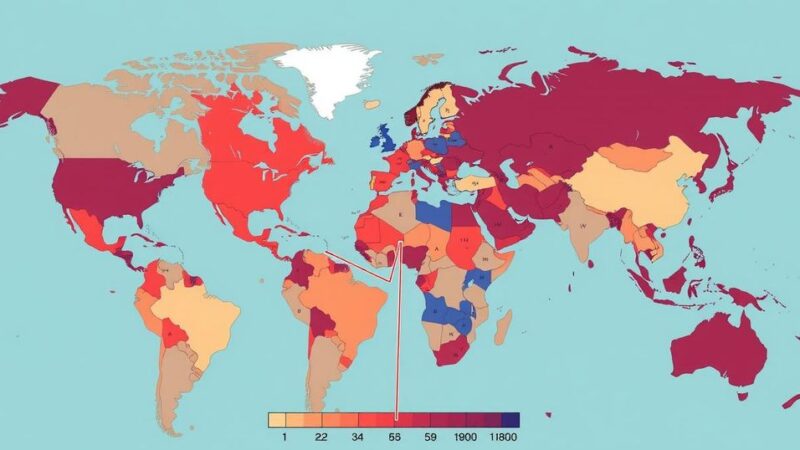Bolivia is currently embroiled in significant protests driven by political struggles between President Luis Arce and former leader Evo Morales within the Movement for Socialism party. These clashes are compounded by economic difficulties including fuel shortages and high prices. As unrest unfolds, similar protests are also occurring in other Latin American countries, reflecting a trend of instability across the region.
Protests and violent clashes have engulfed Bolivia for more than two months, reflecting widespread discontent with the ruling government. Located at the heart of this unrest is a power struggle between President Luis Arce and his predecessor, Evo Morales, within the Movement for Socialism party. The upcoming presidential elections in 2024 have intensified this conflict, which has roots in both political ambitions and significant economic crises faced by the Bolivian populace, including fuel shortages and rising prices.
Evo Morales, revered as Bolivia’s first indigenous president, rose to power in 2006 by focusing on the needs of Indigenous communities. However, his tenure was marred by accusations of authoritarianism and electoral fraud. Following an exodus in 2019 due to disputed elections, Morales returned to support Arce, leading to a complicated relationship that now sees Morales facing serious legal challenges. Furthermore, a rapid decline in the economy, alongside a breakdown in the justice system, has exacerbated public frustration.
Bolivia is not alone in its turmoil; widespread protests have also been occurring across Latin America in countries such as Ecuador, Peru, and Colombia. In Peru, President Dina Boluarte faces a staggering 5 percent approval rating, reflecting widespread dissatisfaction with government corruption and economic stagnation. Colombians are protesting against President Gustavo Petro’s reforms, while Ecuador grapples with violence from organized crime and civil unrest. These civil disturbances illustrate a troubling trend of instability pervading the region.
Moving forward, the situation in Bolivia appears precarious as elections approach. Although President Arce’s reelection remains uncertain, significant divisions within the Movement for Socialism illuminate the potential for substantial political change. Despite the chaos, no significant opposition has emerged to challenge the MAS party’s long-standing dominance at this time.
In recent months, Bolivia has been the epicenter of intense protests reflecting broader discontent in Latin America. As various nations such as Peru, Colombia, and Ecuador experience similar unrest, the political landscape seems increasingly unstable. The Movement for Socialism, which has maintained a strong grip on Bolivian politics for two decades, is currently facing internal strife marked by a leadership battle between President Luis Arce and former President Evo Morales. Economic difficulties, exemplified by fuel shortages and inflation, have fueled public dissatisfaction, showcasing how political dynamics intertwine with pressing social issues. The social fabric of Bolivia is at risk as the country approaches its 2024 presidential elections.
The ongoing protests in Bolivia symbolize a broader crisis impacting multiple Latin American nations characterized by dissatisfaction with governance and growing economic struggles. The internal conflict within Bolivia’s ruling party, coupled with the upcoming presidential elections, might lead to significant changes in the country’s political landscape. As civil society continues to mobilize against systemic issues, the outcomes of these tensions remain essential to monitor, not just for Bolivia, but for the stability of the region.
Original Source: www.firstpost.com







